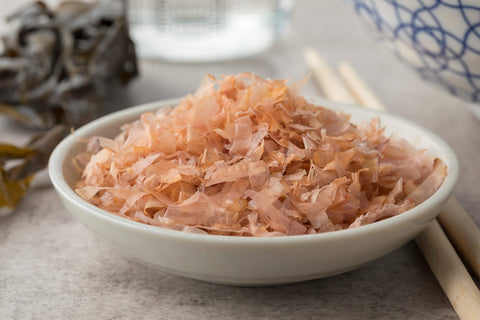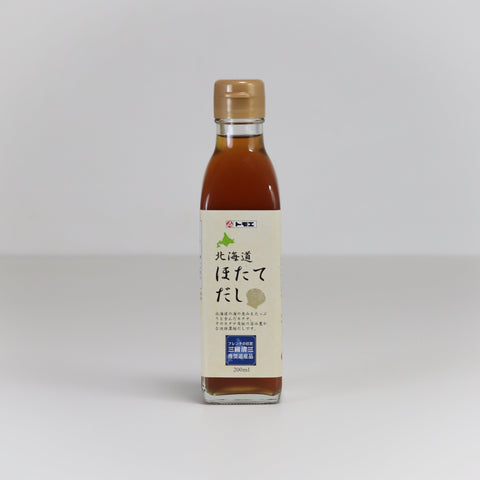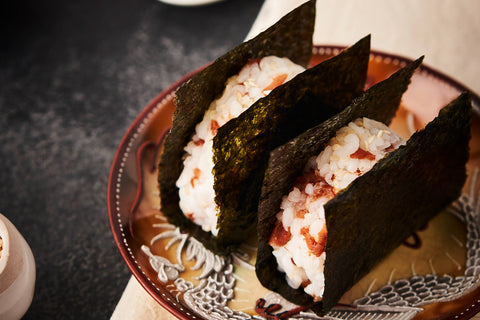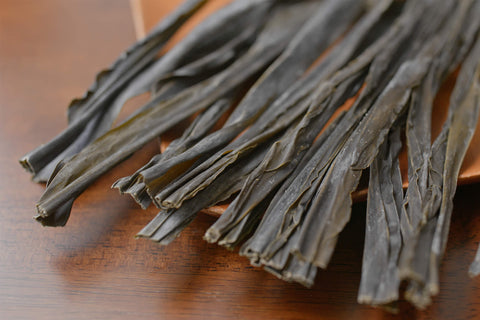
Dashi is a general term that refers to a range of stocks used in Japanese cuisine. Traditionally made by heating kombu and flakes of preserved bonito fish in water and straining out the resultant liquid, dashi is a fundamental ingredient in many Japanese dishes. It forms the foundation of a variety of Japanese soups, including miso soup, noodle broth soup, and clear broth soup. It is also used as a simmering liquid for many other dishes, as it helps to accentuate the savoury umami flavour so popular in Japanese cuisine.
History
Like many of the core ingredients in Japanese cooking, dashi has been in use for centuries. The first references to the stock can be found in texts that are over 800 years old. These refer to the boiling of kombu (any one of several varieties of indigenous sea kelp farmed in Japanese waters) in pure spring water.
Dashi has a distinctive flavour, produced by the glutamic acids that are abundant in kombu. Despite being consumed since at least the 13th century (and likely longer, since evidence of kombu itself has been discovered dating to the 8th century), it was not until 1908 that this flavour was formerly identified. Professor Kikunae Ikeda described this taste as umami, the fifth flavour, along with sweet, sour, salty, and bitter. This flavour was attributed to taste buds responding to glutamic acid.
Preparation
Dashi is an incredibly simple stock to prepare, but its subtle flavour notes make it an essential component of Japanese cooking. To make dashi from scratch requires dried kombu sheets and shavings of a dried and preserved bonito fish. The bonito is a cousin to the more familiar tuna and adds its own redolent flavours to the dashi. These key ingredients are added to cold water and heated to boiling point. Freshly-made dashi takes around 30 minutes to produce, compared to the kind of stocks used in Western cooking that can often take hours of preparation.
Varieties of Dashi
While the traditional dashi of kombu, dried bonito fish flakes and water is still the most popular form of Japanese stock, there are several variations that are used in cooking.
Kombu Dashi
Kombu dashi is even simpler to prepare than regular dashi, since it requires just two ingredients – kombu and pure water. This makes kombu dashi the perfect broth for both vegetarians and vegans. There are two popular methods of making kombu dashi – mizudashi and nidashi. Mizudashi (or cold-water extraction) requires steeping a piece of dried kombu in cold water and letting it sit overnight in the refrigerator. To make nidashi (simmering), you simply add kombu to a pot off cold water, let it soak for anywhere from 30 minutes to three hours, then slowly heat the water to boiling point, carefully skimming the surface of the broth as you go. Kombu dashi tends to be clear and light in colour, with a deep umami flavour.
Iroko Dashi
Iriko dashi (also known as niboshi dashi) is a fish stock that does not include kombu in its ingredients. Instead, it uses dried baby sardines or anchovies, resulting in a bolder, fishier flavour, while retaining the strong umami notes of traditional dashi. It is simple to make, involving boiling the dried fish in water until the aroma is released, at which point you drain the resultant stock.
Shiitake Dashi
Another vegetarian/vegan friendly alternative to bonito dashi is shiitake dashi. It uses dried shiitake mushrooms instead of kombu, to produce a more concentrated umami flavour. The mushrooms are soaked in lukewarm water, resulting in a thin, dark brown broth with a mushroom-like flavour.
Dashi in Japanese Cooking
As discussed, dashi is used as a stock for a range of Japanese soups and broths, including nabe, shabu shabu, sukiyaki, and oden. It also forms the basis of miso soup.
Dashi can also be used to make dipping sauces for fried tempura dishes. The dashi is mixed, with soy sauce, mirin, and sugar to produce a sweet sauce with savoury undertones.
Another popular use of dashi is ohitashi (literally: steeped in dashi), and involves cooking vegetables in a dashi broth to impart those savoury umami flavour notes.
Dashi can also be combined with eggs to produce a Japanese rolled omelette known as dashimaki tamago.
Learn how to make dashiShiro Dashi (Dashi Concentrate)
From the middle of the 20th century, dashi has been more commonly used in liquid concentrate form. Available year-round in supermarkets and artisanal stores across the country, it is a fast and convenient method of making dashi at home, compared to the more traditional way of producing it from scratch. Artisanal shiro dashi is made from the same high-quality ingredients, local to the producers. Since these ingredients are often very hard to export, shiro dashi concentrates allows chefs and home cooks alike the opportunity to enjoy the authentic flavour of traditional dashi.
Popular Products
These are just some of the dashi products and variations that prove particularly popular at SushiSushi. Click on a link to learn more, or visit our online store for more dashi products.
if you're interested in making Dashi from scratch, why not purchase our Dashi Making Kit? (contains Kombu, Bonito Flakes & Shiitake).
Ninben Shiro Dashi Liquid Stock
This 10 to 1 concentrate is a great addition to soup and stocks, providing those incredible umami flavours that enhance so much of Japanese cooking. It can be diluted using hot or cold water.
Tomoe Hokkaido Scallop Dashi
This delicious dashi, made from the meat and coral of scallop, has a unique flavour all its own. It is used to enhance a wide variety of popular dishes, include soups, fried rice, and ramen.
Tomoe Rausu Kombu Dashi
Rausu kombu is well-regarded for the quality of its seaweed. It is used exclusively in this quality dashi concentrate, producing a flavour that, once tasted, is seldom forgotten.
Our Suppliers
Here at SushiSushi, we source our dashi from some of the most well-respected and established producers in Japan. These include:
Tomoechan
Tomoechan are well-known in Japan as a soy sauce producer, but also manufacture a fine selection of shiro dashi (dashi concentrates), all made using fresh, local produce from the Hokkaido region. These concentrates are much in demand from high-end chefs across the UK and beyond.
Ninben
Established in 1699, Ninben is a well-respected producer of high-quality katsuobushi, the shavings of which are used to create rich and delicious dashi from scratch. They pride themselves on constantly developing, refining, and innovating, whilst maintaining their traditional methods of production.
Fukushima Bonito Co. Ltd
Formerly known as Fukushima Kyoto Store Co. Ltd, this company has been in business for almost a century, producing dashi and rishiri kombu products of the highest quality for home and commercial kitchens alike.














